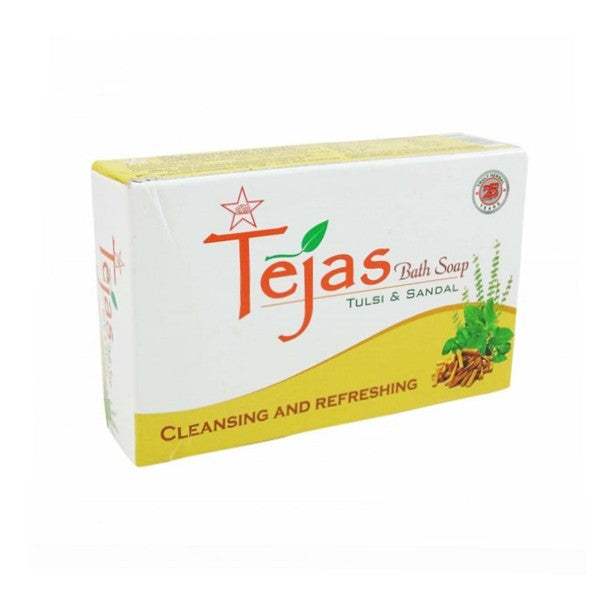S-Tejas General Bath Soap (Tulasi and Sandal)- 75gm
S-Tejas General Bath Soap (Tulasi and Sandal)- 75gm
Couldn't load pickup availability
Tulsi and Beauty
In his review of traditional Indian herbal plants, pharmacist Debjit Bhowmik reported that Tulsi is a natural beauty enhancer, with many Indian women incorporating it into their daily self-care rituals. Bhowmilk noted that applying Tulsi powder may lighten or remove aging and dark-pigmented spots from the face. Similarly, a paste made with Tulsi is used for leucoderma, a health issue of unknown cause, characterized by de-pigmentation of the skin. “For natural freshness,” Bhowmilk instructed, “boil water with Tulsi leaves or powder and lemon juice. Cover your head with a towel, and refresh your face with the emanating steam.” Tulsi is used as both a cleanser and blood purifier — the latter of which is an important facet of Ayurvedic health.
Making a paste with Tulsi for topical applications may be performed with a variety of ingredients. Long-time practitioner and researcher Larisa, whose articles appear on her website, suggests multiple topical uses for Tulsi:
- As a tea — protects against greying hair
- As a cleansing powder — in conjunction with other herbs, dried and powdered Tulsi can be used mixed with chickpea flour or clay and water as a daily skin cleanser.
- As a scrub — Mix Tulsi powder with aloe vera juice, milk, or cream.
- As a lotion for dry skin — use sesame or avocado oil enriched with Tulsi.
Priya Prakashan, who covers beauty and fashion for India.com, wrote that to make a brightening face mask, mix equal parts of ground or dried Tulsi with milk. Apply the paste to the face and neck for 20 minutes before scrubbing it off. This mask has a skin-lightening effect.
To make an anti-acne face mask at home, Prakashan suggests taking a bunch of Tulsi and neem dried powder or leaves and grinding them together to make a paste. Then, she says, add a few drops of freshly squeezed lemon juice and apply this to the acne. Once the paste dries, rinse it off with water and pat dry. A similar application can be made in the form of compresses with liquid tea. This one-two punch supplies much-needed antibacterial, antifungal, and anti-inflammatory ingredients. Plus, Tulsi provides the additional benefit of supporting a healthy immune response to acne (as well as other) scars.
Lastly, we can add to these DIY at-home skin treatments a simple recipe for using Tulsi tea as an antiseptic facial and neck toner — a refreshing alternative to harsh alcohol-based products meant to close pores and tighten the skin. To make your own Tulsi skin toner, add a few leaves of Tulsi to boiling water. Once it cools, strain and adds an equal amount of the infusion to rose water. Spray it on your face using a bottle with a spray nozzle. For maximum potency, make a fresh batch every three days, and store it in the refrigerator.
Regular use of the antibacterial Sandalwood powder helps in fighting acne-causing bacteria, exfoliates the skin, soothes sunburn, removes suntan, and also reduces signs of aging such as dry skin and wrinkles. The smell of sandalwood also immediately leads to your mood becoming all the more pleasant.
If you have trouble fighting acne, blemishes, or dry skin problems, we’d suggest that you opt for sandalwood powder instead of any commercial beauty products. It has numerous health and beauty benefits, one of them being that it can treat skin rashes, blemishes, acne, and many other skin problems. The advantages of sandalwood for your skin are varied and numerous.
BENEFITS;
Protects your skin from infections,
Anti-alergic,
Removes pimples,
Controls itching,
Protects skin from sun damage.
DIRECTION FOR USAGE;
External use [ bathing soap]
Share


